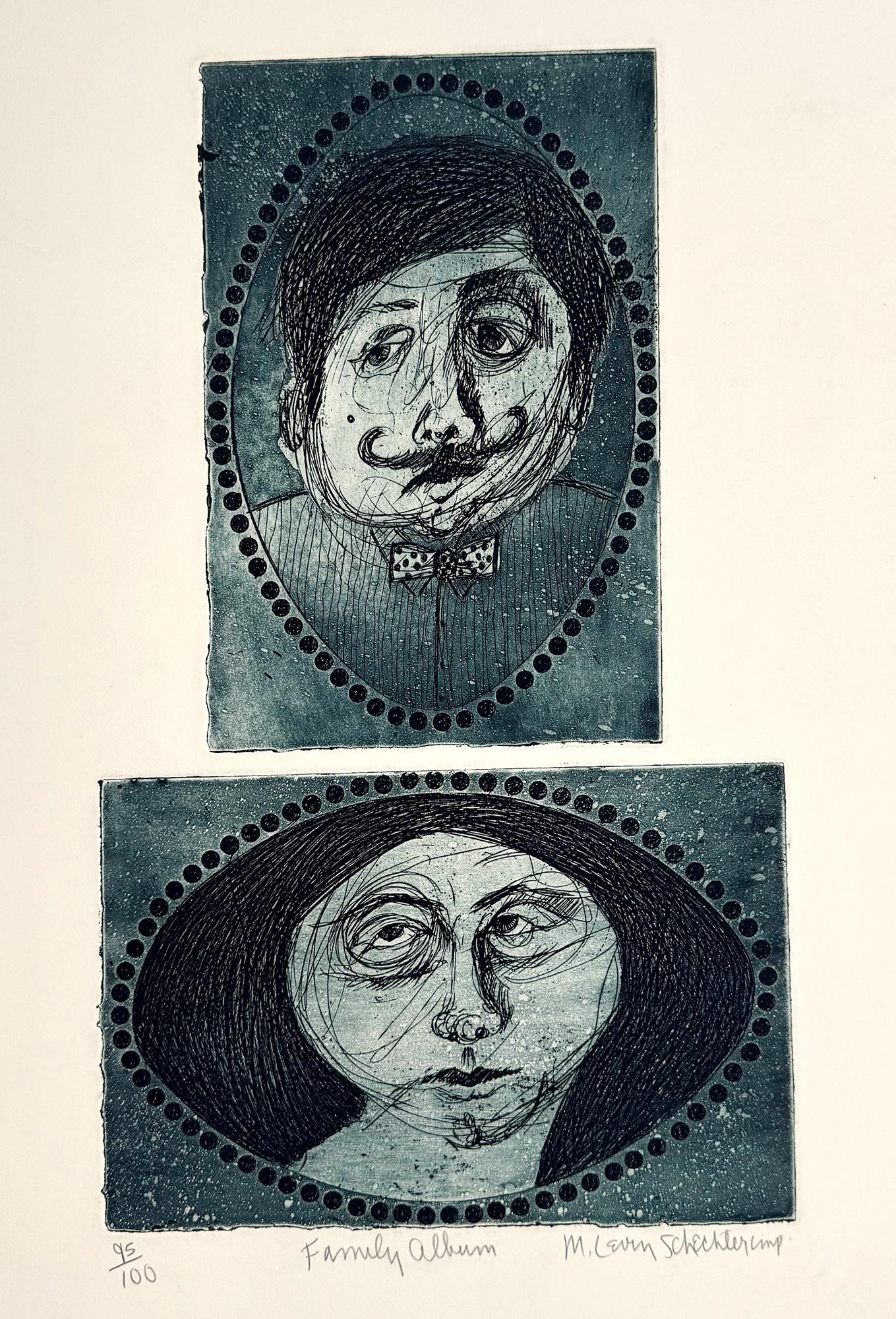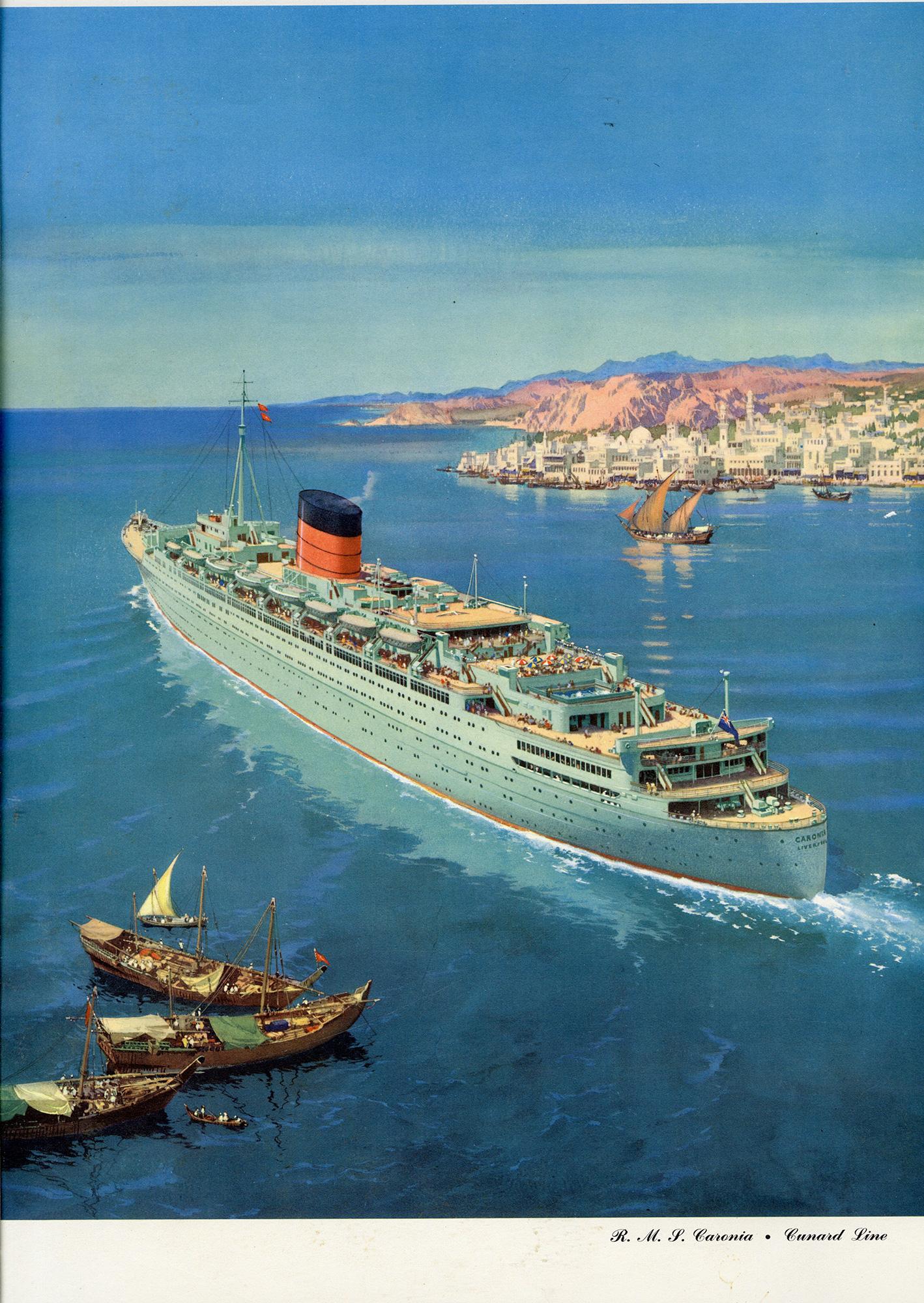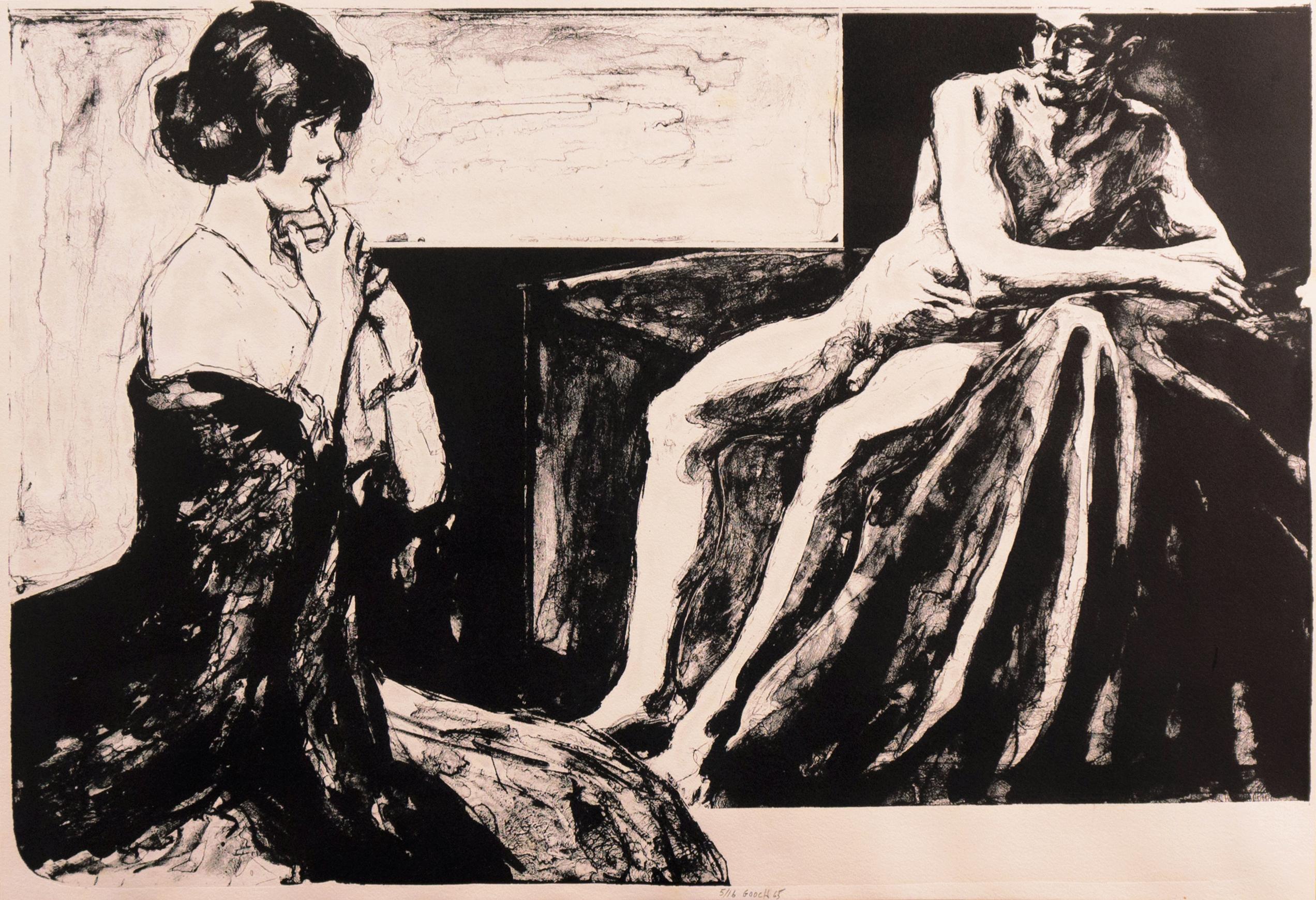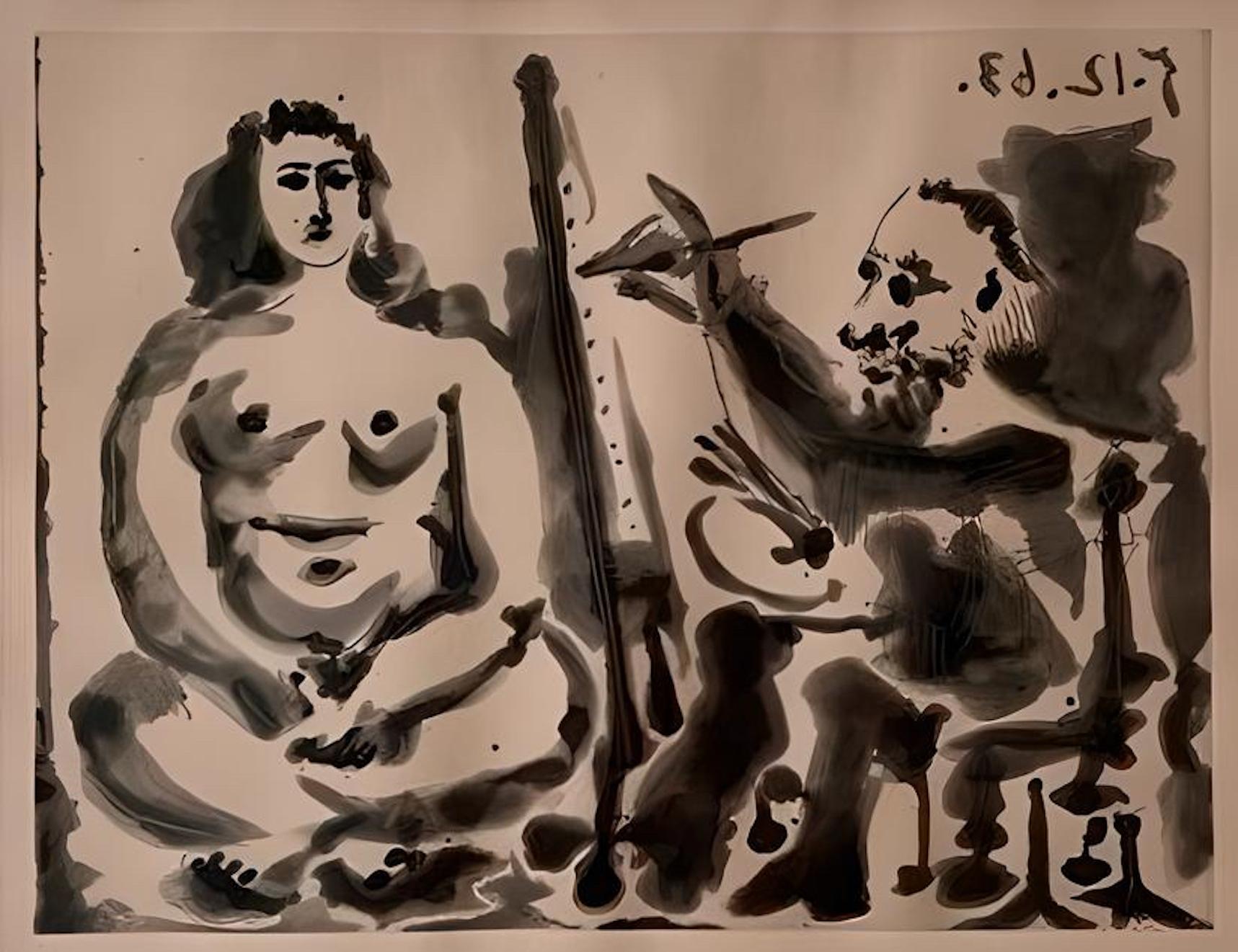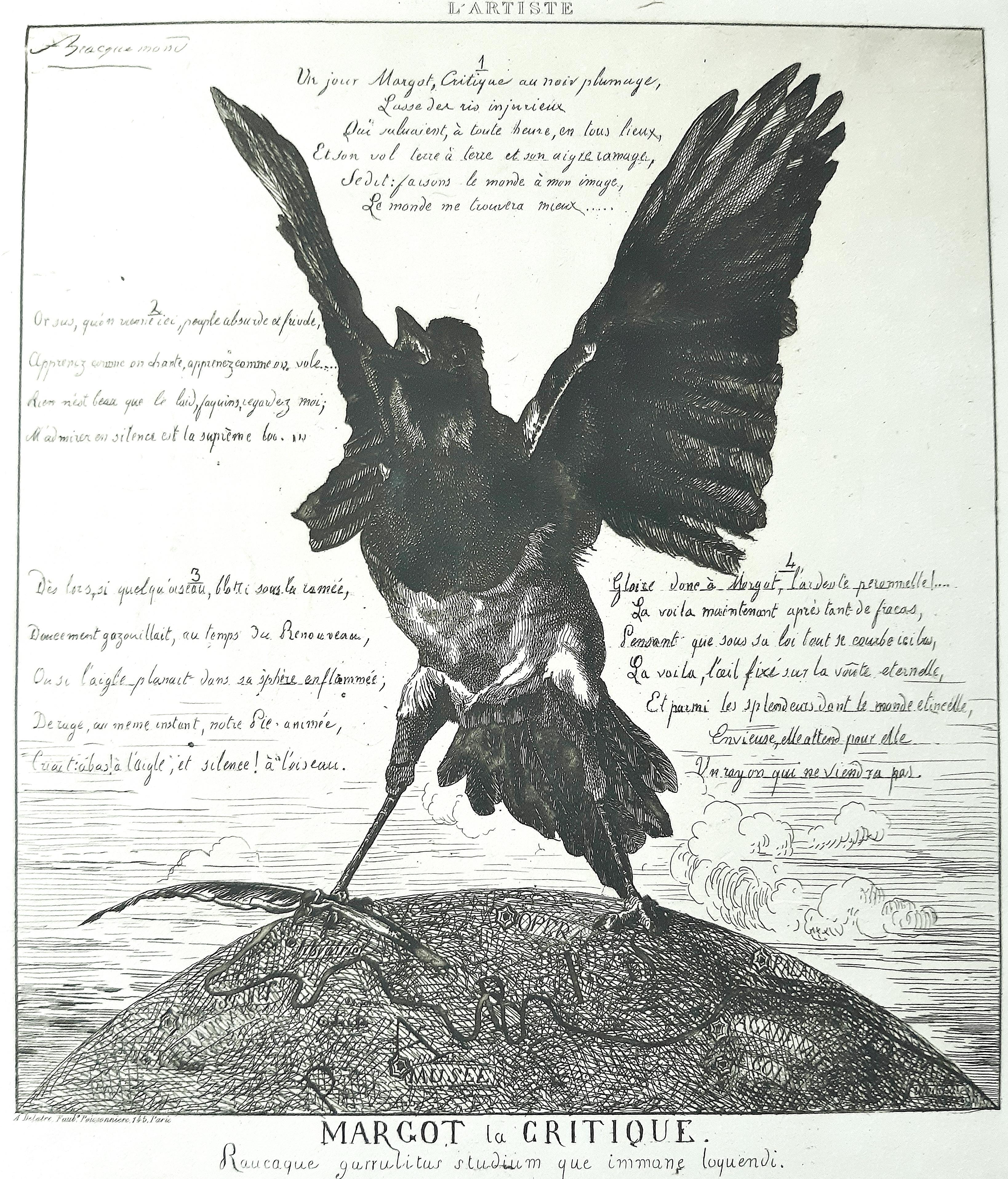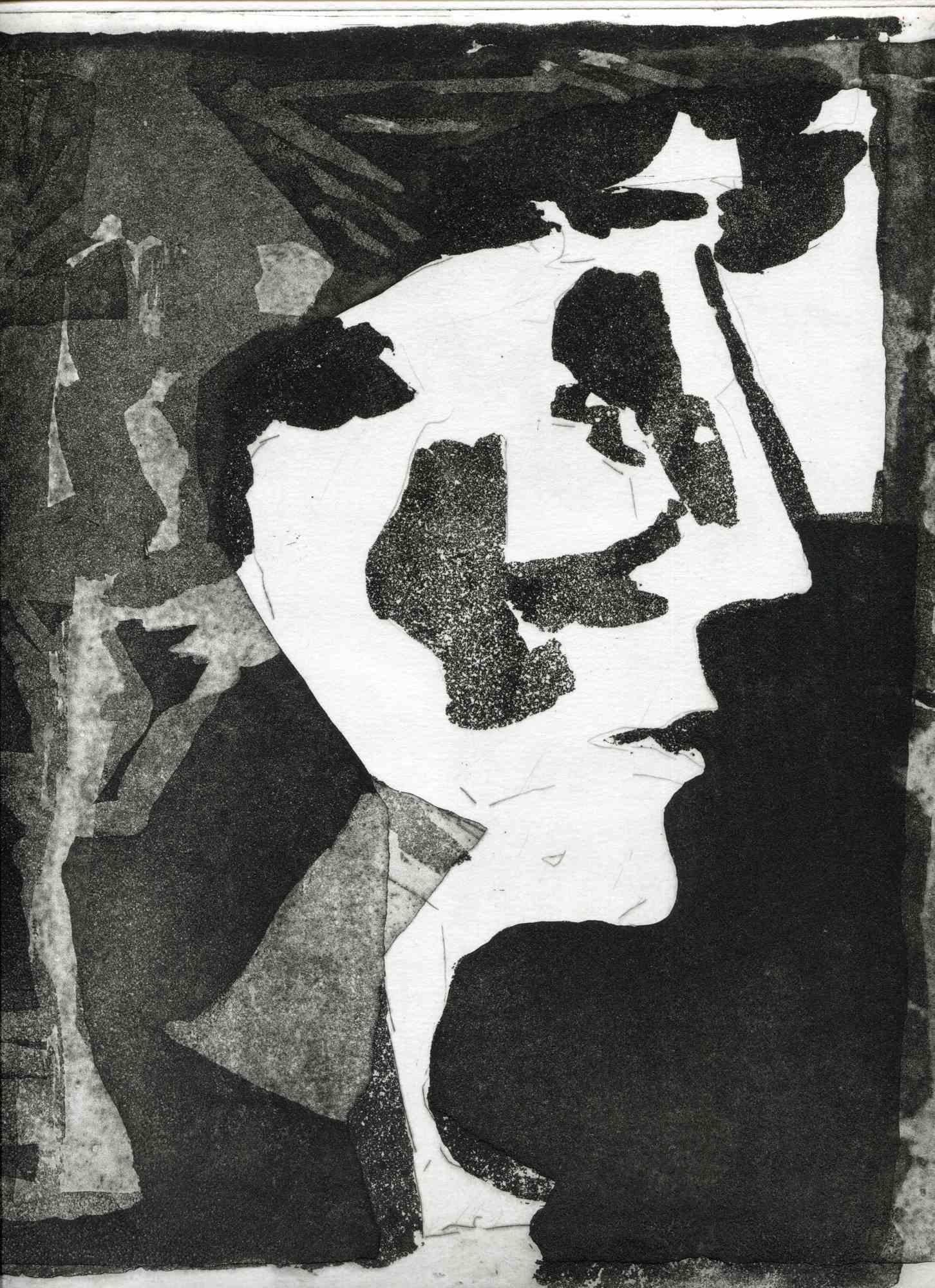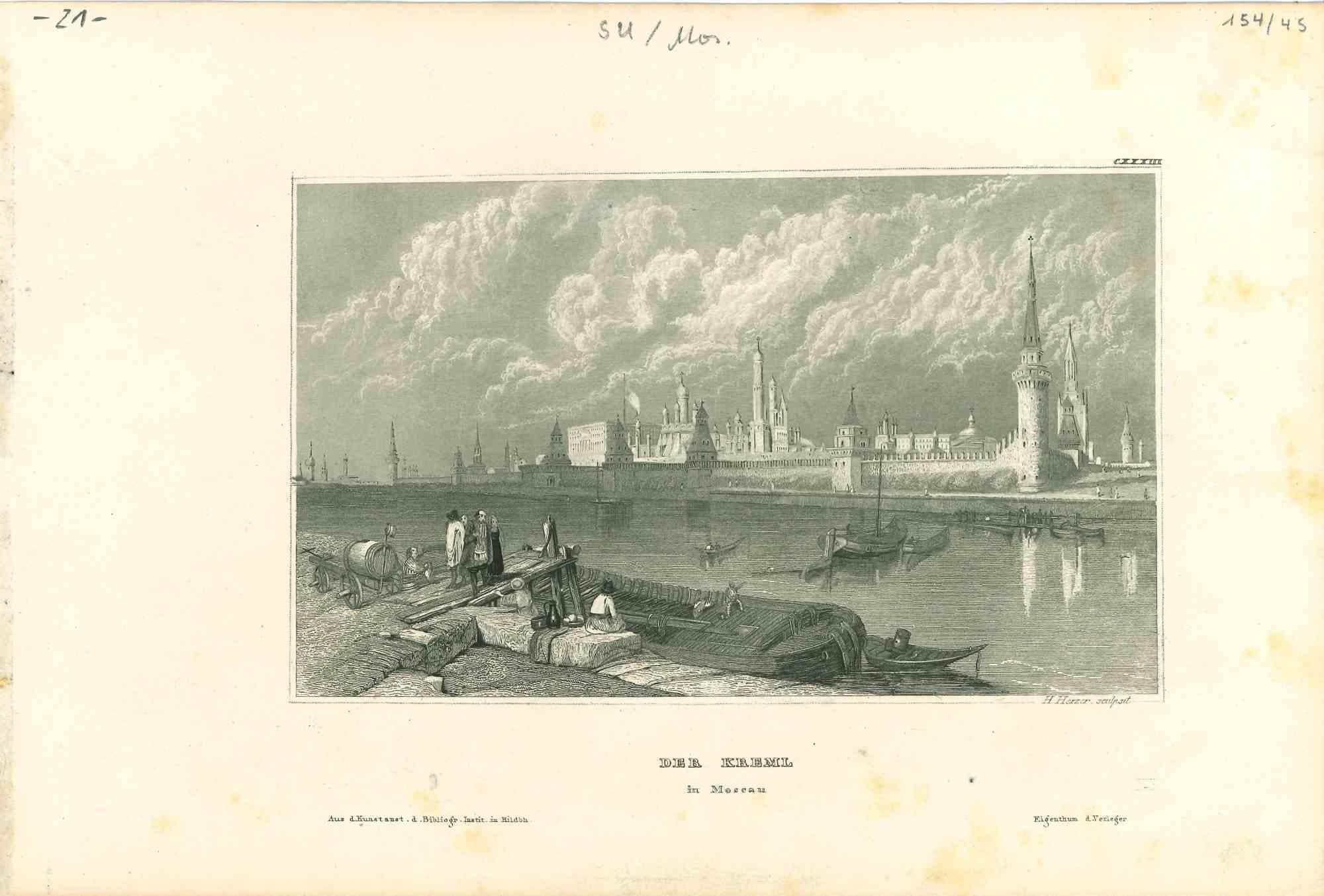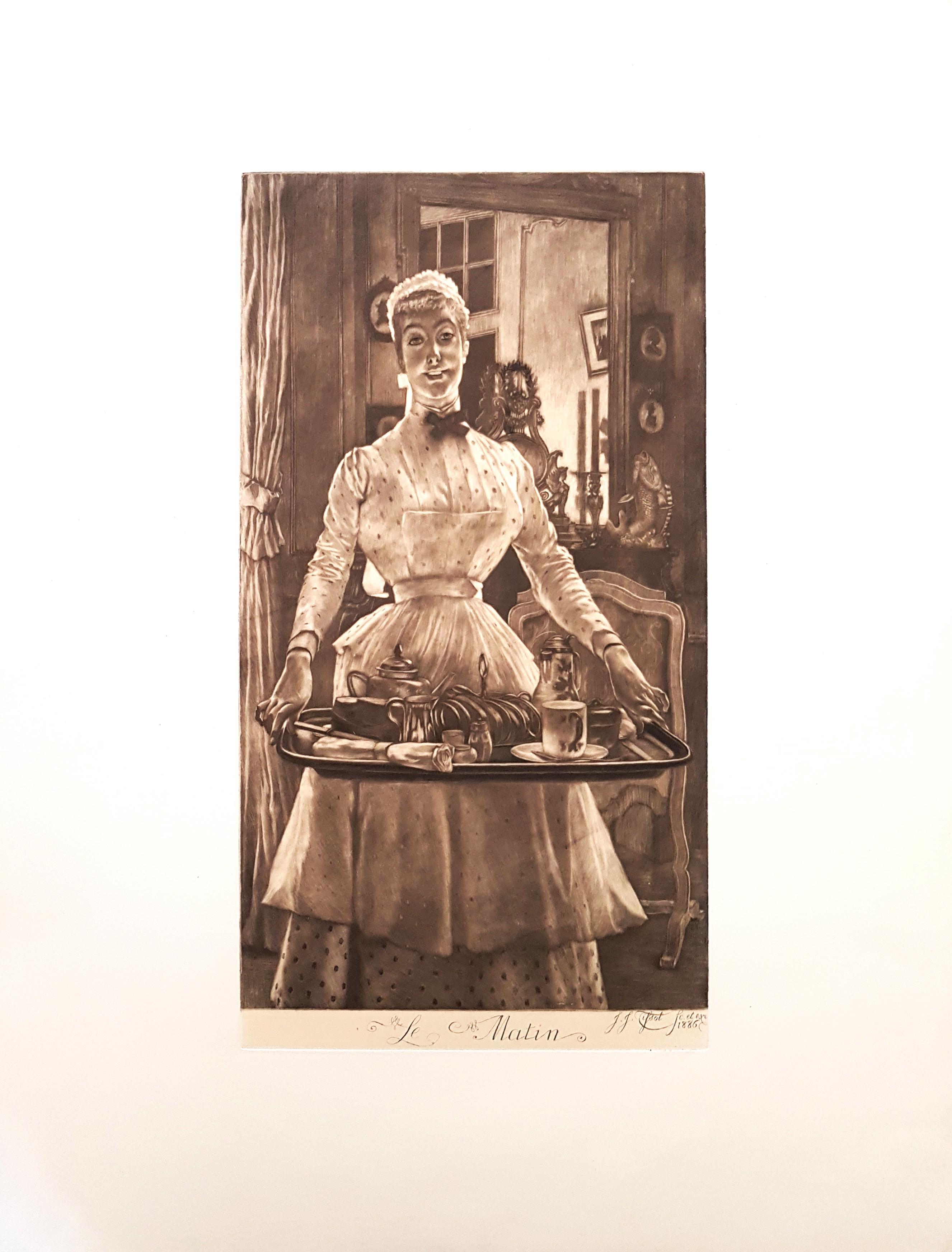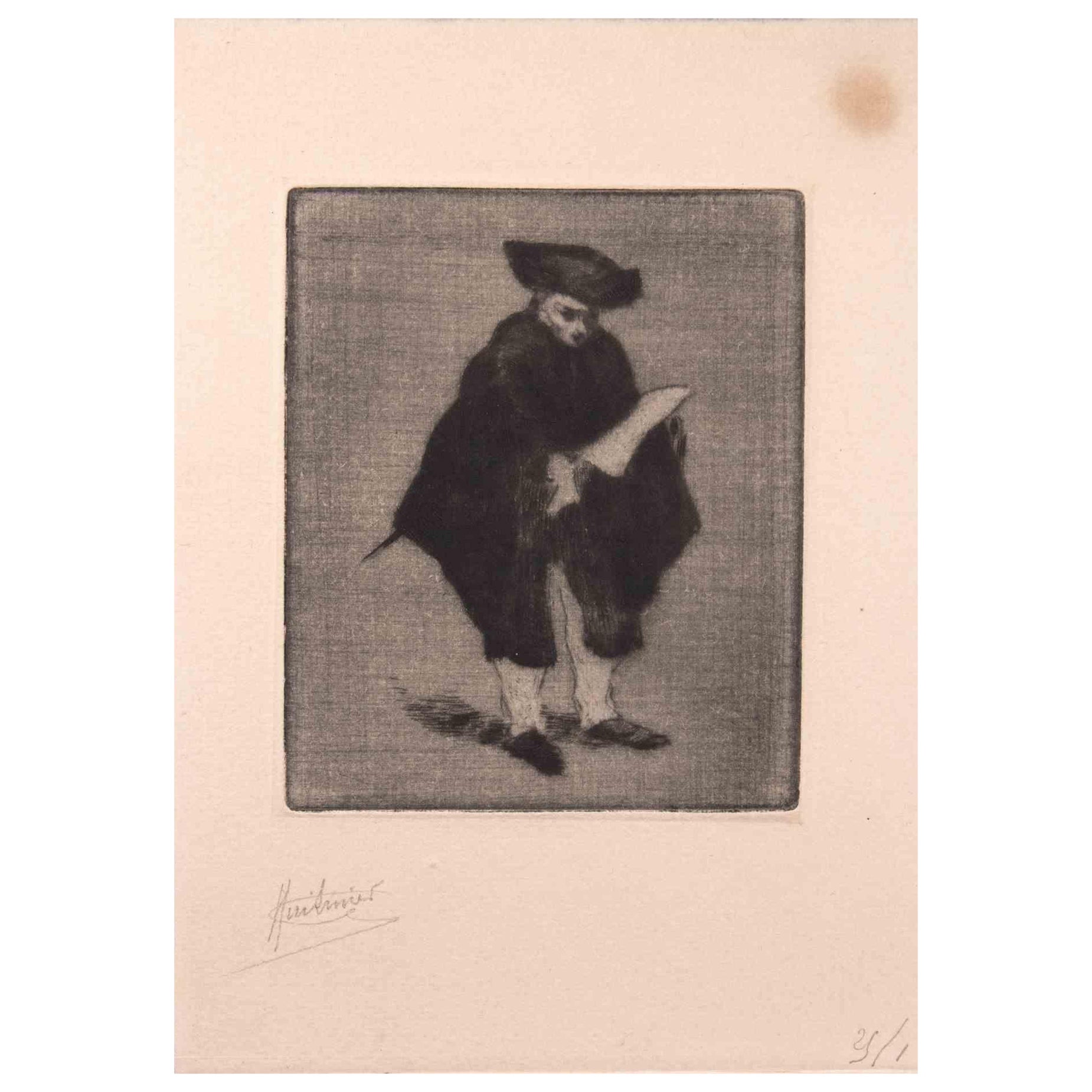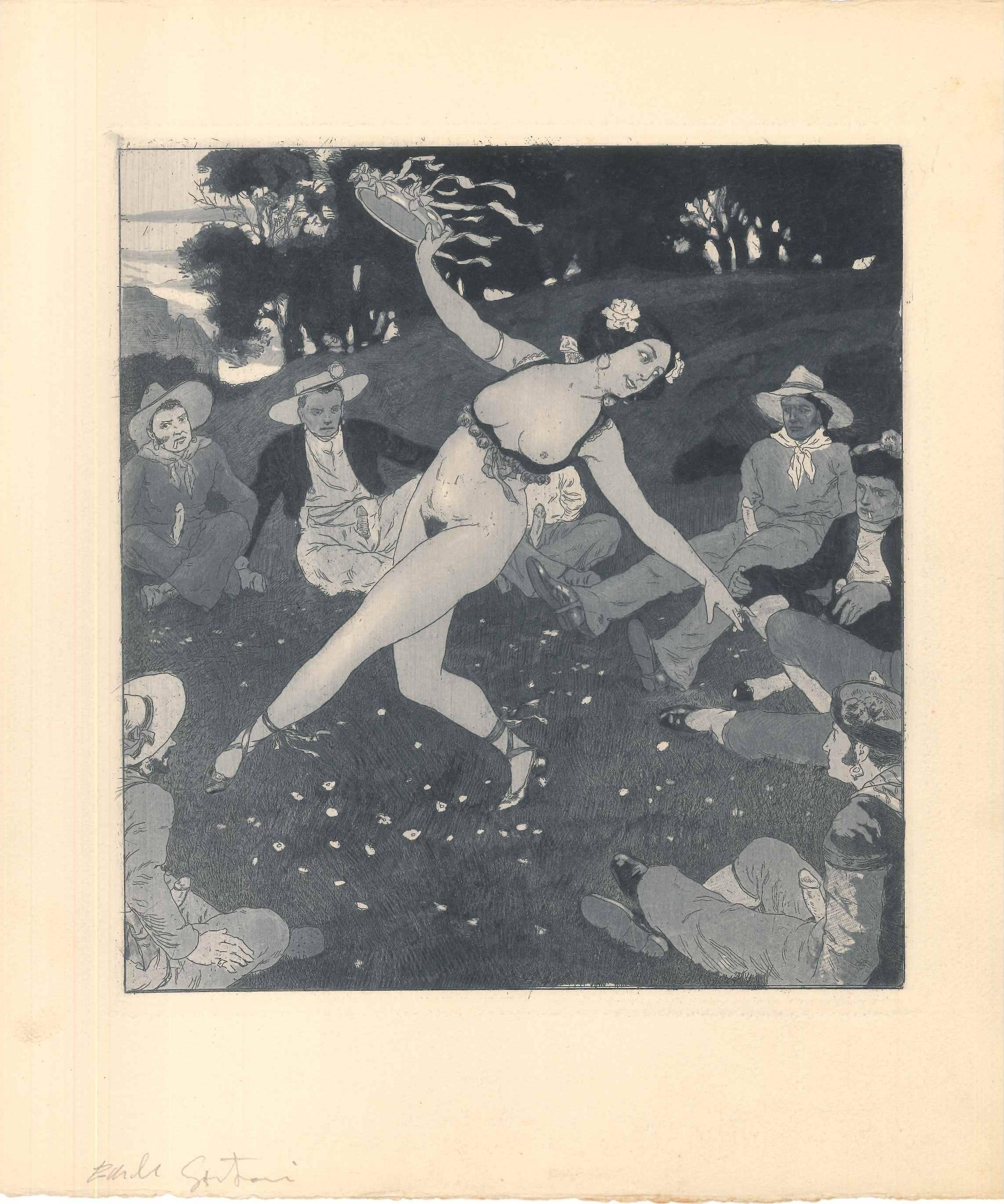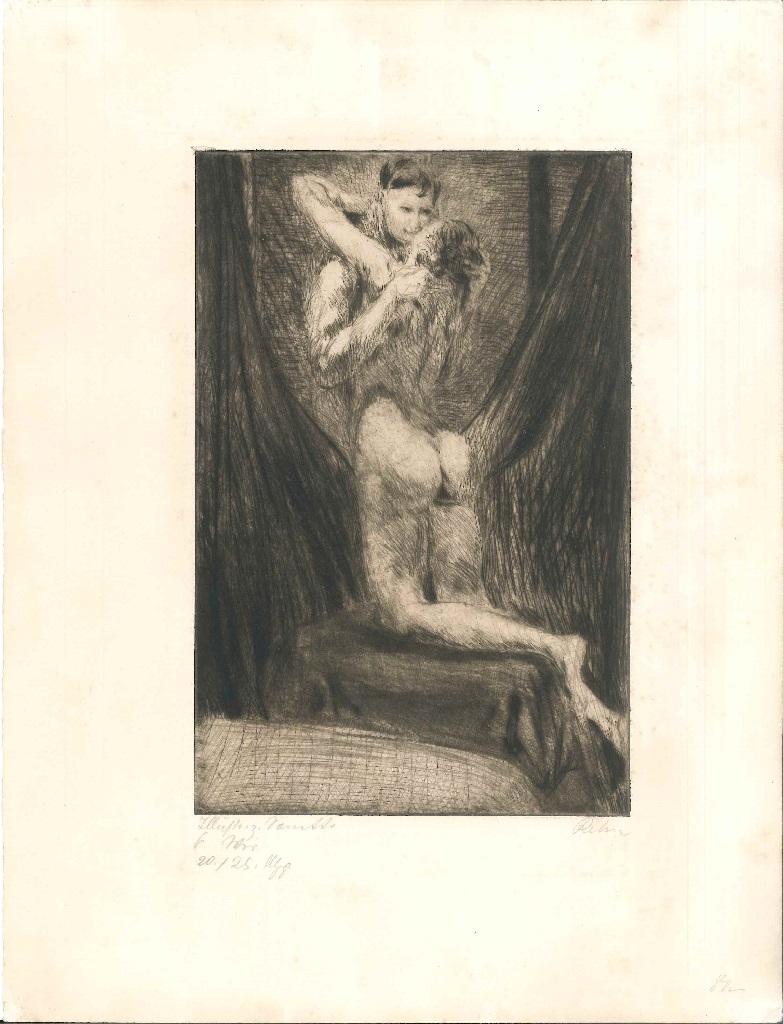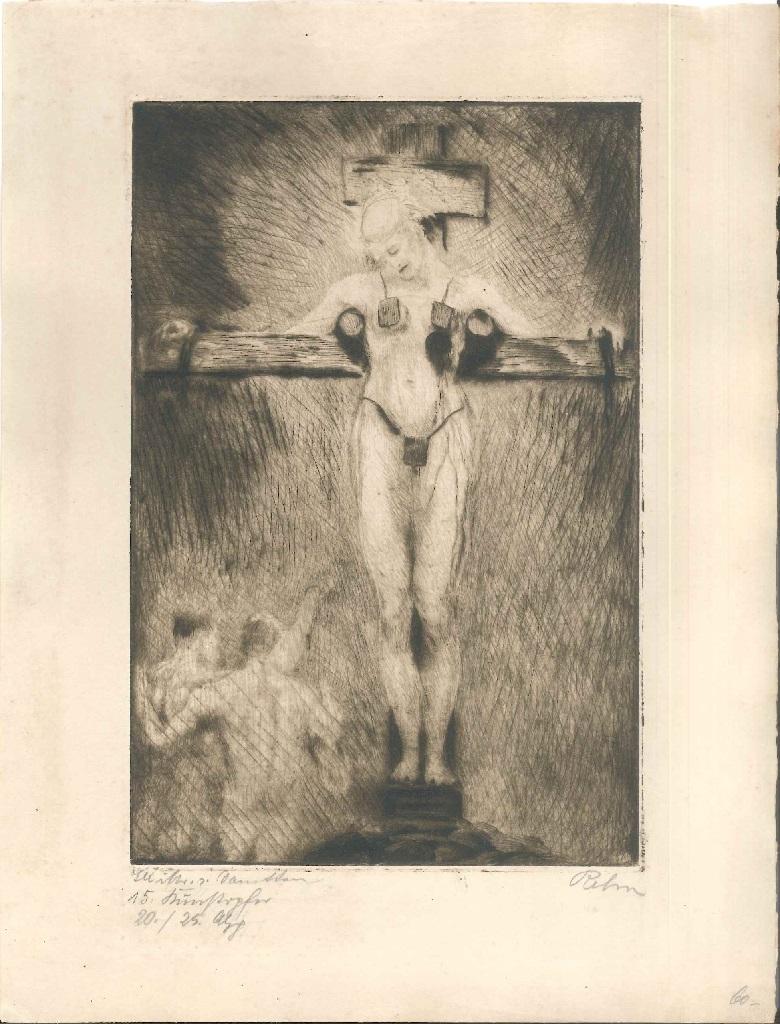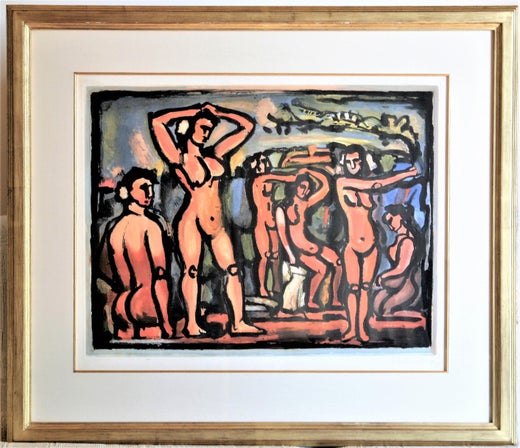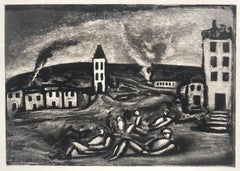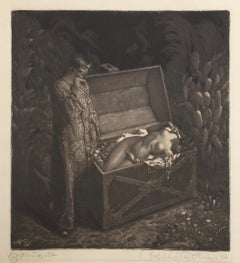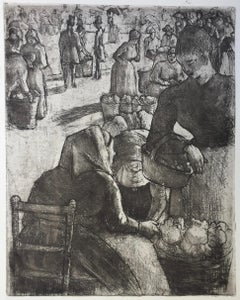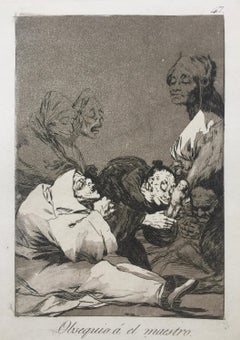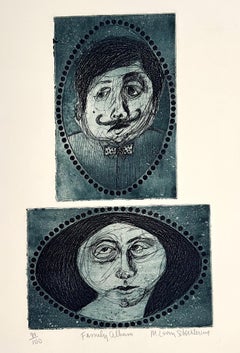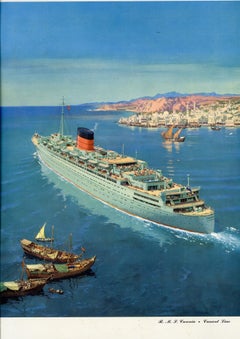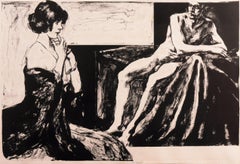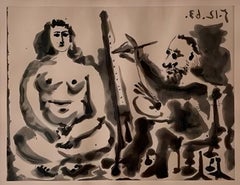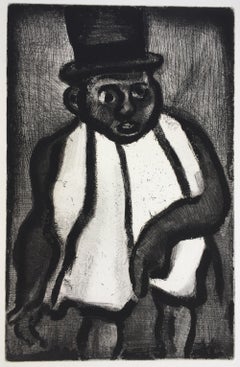
THE GOOD CANDIDATE - from Reincarnations - Pere Ubu
View Similar Items
Want more images or videos?
Request additional images or videos from the seller
1 of 6
Georges RouaultTHE GOOD CANDIDATE - from Reincarnations - Pere Ubu1928
1928
Price:$325
About the Item
- Creator:Georges Rouault (1871-1958, French)
- Creation Year:1928
- Dimensions:Height: 11.75 in (29.85 cm)Width: 7.875 in (20.01 cm)
- Medium:
- Movement & Style:
- Period:
- Condition:
- Gallery Location:Santa Monica, CA
- Reference Number:1stDibs: LU41133769511
Georges Rouault
Executed in 1937, Carlotta belongs to a group of portraits of members of society. Unlike Picasso and Toulouse-Lautrec, who portrayed these individuals with pathos, Rouault’s approach was unapologetic and raw. In the present work several layers of pigment can be discerned; the build-up of translucent and opaque layers of paint creates a three-dimensionality that characterizes the artist’s strongest work. Furthermore, the work is highlighted by the deep swaths of black delineating the subject, representing a signature element of Rouault’s portraiture of this period.
About the Seller
5.0
Recognized Seller
These prestigious sellers are industry leaders and represent the highest echelon for item quality and design.
Gold Seller
Premium sellers maintaining a 4.3+ rating and 24-hour response times
Established in 1977
1stDibs seller since 2016
288 sales on 1stDibs
Typical response time: 1 hour
Associations
International Fine Print Dealers Association
Authenticity Guarantee
In the unlikely event there’s an issue with an item’s authenticity, contact us within 1 year for a full refund. DetailsMoney-Back Guarantee
If your item is not as described, is damaged in transit, or does not arrive, contact us within 7 days for a full refund. Details24-Hour Cancellation
You have a 24-hour grace period in which to reconsider your purchase, with no questions asked.Vetted Professional Sellers
Our world-class sellers must adhere to strict standards for service and quality, maintaining the integrity of our listings.Price-Match Guarantee
If you find that a seller listed the same item for a lower price elsewhere, we’ll match it.Trusted Global Delivery
Our best-in-class carrier network provides specialized shipping options worldwide, including custom delivery.More From This Seller
View AllMON DOUX OU-ETES-VOUS? / MY SWEET COUNTRY, WERE ARE YOU?
By Georges Rouault
Located in Santa Monica, CA
GEORGES ROUAULT (1871-1958)
MON DOUX OU-ETES-VOUS? / MY SWEET COUNTRY, WERE ARE YOU? 1927
( Chapon/Rouault 97; Wofsy 151) Miserere XLIV Aquatint, 1927, on laid Arches. watermark...
Category
1920s Modern Landscape Prints
Materials
Aquatint
1001 Nights - SURREALIST WOMAN DEAD IN A TREASURE BOX
Located in Santa Monica, CA
RICHARD TESCHNER (Prague 1879 – 1948)
From: A Thousand and One Nights -
SURREALIST WOMAN DEAD IN A TREASURE BOX, 1917 Aquatint, Proof no. 17. Aqua...
Category
1910s Symbolist Figurative Prints
Materials
Aquatint
Marche aux Legumes a Pontoise
By Camille Pissarro
Located in Santa Monica, CA
CAMILLE PISSARRO (French 1830- 1903)
MARCHE AUX LEGUMES A PONTOISE, 1891 (D. 97ii/ii)
Etching and aquatint, Unsigned as published in Le Peintre-graveur Illlustre: Pissarro, Sisley,...
Category
1890s Impressionist Figurative Prints
Materials
Aquatint
OBSEQUIO á el MAESTRO (‘A gift for the master’)
By Francisco Goya
Located in Santa Monica, CA
FRANCISCO de GOYA y LUCIENTES (1746 -1828)
OBSEQUIO á el MAESTRO (‘A gift for the master’) Plate 47 from the 1st edition of Los Caprichos (Blas, ...
Category
1790s Old Masters Figurative Prints
Materials
Etching, Aquatint
LA SORCIERE - (The Witch)
By Kurt Seligmann
Located in Santa Monica, CA
KURT SELIGMANN (1900–1962 American, born in Switzerland,)
LA SORCIERE - (The Witch) 1934
Etching and aquatint, unsigned ? possibly a proof aside from The ...
Category
1930s Surrealist Figurative Prints
Materials
Etching, Aquatint
CALIFORNIA VISTA
By Harold Lukens Doolittle
Located in Santa Monica, CA
HAROLD L. DOOLITTLE (1883 – 1974)
CALIFORNIA VISTA, 1923
Aquatint signed and titled in pencil. 8 7/8 x 6 7/8 inches. Sheet 11 x 14 inches. Good condi...
Category
1920s American Realist Figurative Prints
Materials
Aquatint
You May Also Like
Family Album
Located in Middletown, NY
Etching and aquatint printed in brown and black with embossing, 15 x 11 3/4 (381 x 298); sheet 20 1/2 x 16 3/4 inches (521 x 426 mm), full margins. Signed, tited and numbered 3/25 in...
Category
Mid-20th Century Modern Figurative Prints
Materials
Etching, Aquatint
R.M.S. Caronia Cunard Line
Located in Middletown, NY
A beautiful poster advertising a less famous, doomed Cunard ship.
c1950. Offset lithograph in colors on lightweight white wove paper, 16 x 12 3/8 (420 x 315 mm); sheet 21 7/8 x 17 7...
Category
Mid-20th Century Modern Figurative Prints
Materials
Etching, Aquatint, Lithograph, Offset
'The Female Gaze', NYMoMA, California College of Arts and Crafts, SFAI, CPLH
By Gerald Gooch
Located in Santa Cruz, CA
Signed lower center, 'Gooch', for Gerald Gooch (American, born 1933) with number and limitation, '5/16' and dated 1965.
Born in Mainington, West Virginia, Gerald Gooch first studied...
Category
1960s Modern Figurative Prints
Materials
Paper, Etching, Aquatint
Pablo Picasso - Le Peintre et son Modèle IV
By Pablo Picasso
Located in London, GB
Pablo Picasso
Le Peintre et son Modèle IV (B. 1141; Ba. 1139)
Aquatint and drypoint, 1963, signed in pencil, numbered 19/50 (total edition includes 15 artist's proofs), printed by C...
Category
1960s Modern Figurative Prints
Materials
Aquatint
Margot La Critique - Etching, Aquatint and Drypoint by F. Braquemond - 1854
By Félix Bracquemond
Located in Roma, IT
Margot la critique is an originaletching on Chine collé, realized by Frenc artist Félix Henri Bracquemond published in L’Artiste in 1854.
In good conditions.
This Etching is Re...
Category
1850s Modern Figurative Prints
Materials
Drypoint, Etching, Aquatint
The Face - Original Etching and Aquatint- Mid-20th Century
Located in Roma, IT
The Face is an original print in etching and aquatint on paper realized by an anonymous artist of the mid-20th Century.
In very good conditions.
The artwork created through confide...
Category
Mid-20th Century Modern Figurative Prints
Materials
Etching, Aquatint
